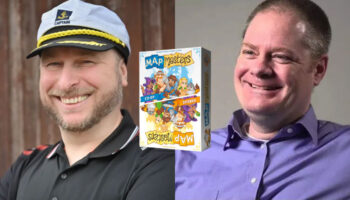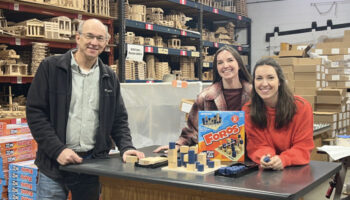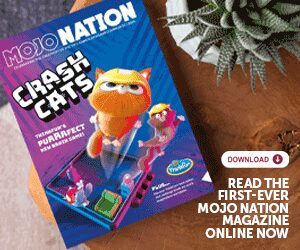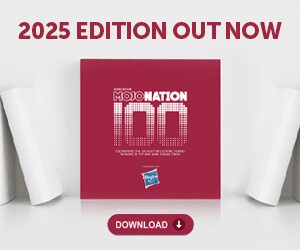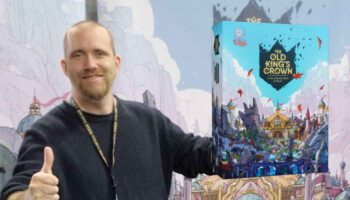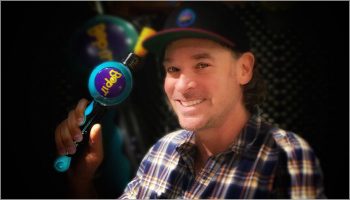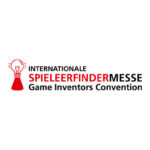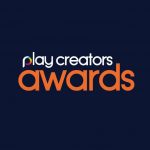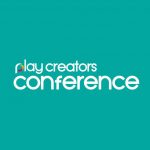Inventor Michael Lichodziejewski on the origins of his chaotic new card game: Mine Mine Mine
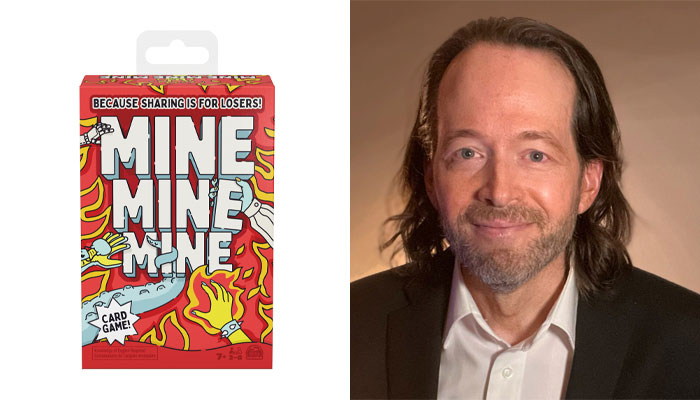
Michael, you’ve been on my list for a while so I’m delighted to catch up! Let’s start at the beginning – was a career inventing toys and games always on the cards?
I was always into creating things. I grew up customising all my model kits and repainting them to look like the car down the street – or making vehicles out of paper and cardboard. Then I started building pretend replica guitars out of wood and cardboard in my parents’ garage – and then graduated to making real guitars on my parents’ kitchen table. After having a paper route to pay for all the models and Star Wars vehicles I was collecting, I went on to work at a toy store called Child World.
I then went into industrial design because I always liked making things. A couple of alumni from the school I went to came down to speak to us, and they were from a Chicago area thinktank – Meyer/Glass Design. I ended up getting an internship there, and after I graduated, I worked there for several years as an inventor.
And Meyer/Glass was incredibly prolific.
Yes, they were part of the classic Chicago area inventor scene of the toy industry. Everyone there had worked with Marvin Glass, so to be brought into that legend and hear all the stories behind these classic games was incredible.
Amazing. And from there you went from inventor to an in-house design role?
Yes, I then went to RC2 Corporation, which became Learning Curve, which became TOMY when they bought it. So there I worked on classic licences like Thomas the Tank Engine and a number of Disney properties. It was very exciting.
Then someone I used to work with at Meyer/Glass – Randy Klimpert – contacted me. He was at Hasbro at the time and he said: “Hey, you want to come work out here?” I loved working on games back at Meyer/Glass so the opportunity to go and work with Randy on the games team – working on many of the most well-known game brands in the world – was too good to pass up. So I joined Hasbro and was there for almost six years, and now doing it on my own – inventing, coming up with games and toys. It’s super fun and maybe in my DNA to be an inventor.
Yes, full circle! You’ve invented toys and games, but you mentioned there a love for games…
Yes, I love the complications that games add to inventing… Inventing a toy is super satisfying because you can make this thing that a kid can do whatever they want with and have a great time! But when you’re making games, it’s like a toy with rules. The invention is broken if you can’t figure out how to design it the right way, with the right use pattern so someone can play with it successfully. That’s an extra challenge that’s always been exciting to me.
Going back to your first inventing role at Meyer/Glass, can you recall the first invention to have your fingerprints on?
Yes! The first game I worked on was called Dash-N-Dine, which came out with Waddingtons. This was back when I was an intern. I didn’t know what I was doing, so I just made a game I thought was cool and it worked out! It was pitched after my internship ended, so when I went back to school I saw it had launched at retail and thought: ‘Holy cow! This is amazing!’ But I don’t think anyone has heard of Dash-N-Dine other than my parents.

Ha! ‘Shake, roll but don’t get rattled in this frantic fast food race game’. It looks fun! And did your experience as an inventor shape your approach to design once you moved in-house at places like TOMY and Hasbro?
Absolutely. I think that inventor experience made me very comfortable with ambiguity. And sometimes teams internally are not comfortable with that – they want all the parameters. If a studio came to us and just said: “Here’s the character, make something cool for it”, the marketing team might be perplexed, but I had no problem with that… Coming up with something out of nothing is the first step in the whole development process. Then, the designer in me later down the path is like: ‘I want to know what actual the constraints are.’ But I love the stage when it’s super vague.
And did you work on inventor items when you were in those in-house roles?
At Hasbro, my team loved working with the inventor relations team. They would filter concepts and then show us things that might make sense for what we were looking for – so we would work with inventors all the time. One that comes to mind was Don’t Step In It from inventors Don Ullman and Bob Driscoll. I was asked: “What do you think about this?” and I immediately thought it was great!

Things like that are super exciting – partnering with somebody outside the company that’s looking at areas the internal team doesn’t have time to look at. It’s super valuable.
And now you’re back on the inventor side, I imagine you have great empathy from the processes and systems your ideas will be going into.
Any inventor that goes on to work internally at a toy company is going to learn how the general process works from start to finish – and that includes things that are going to come up that could be roadblocks to stop your concept making it through. You also learn about costing and if you’re not super mechanically inclined, you can learn from engineers about how to execute certain things.
Also, designers don’t typically see the world in the same way marketers see the word – but it’s a very important thing to understand what they’re looking for and why. It may feel like they’re working against you, but there’s very important reasons why they’re making decisions on why they want to do an item. Those reasons can, depending on how you interpret them, can demotivate you or motivate you in the direction of solving the problem. I always loved working closely with my marketing counterparts to try to figure out the right answer to whatever we had in front of us.
Great answer. Now, what sorts of things are you finding yourself inventing these days?
I go back to what I liked to do when I first started, which ended up being games – so most of what I’m doing is games. And as you do more of them over time, you find that your personality – or your own quirkiness – is somehow linked to each one…
In what way?
It might be in a name or theme or tagline or some element of play. I tend to be accidentally good with names and taglines – maybe due to all the dad puns that come with raising kids… But there is a DNA that goes through the stuff I’ve been inventing, for better or worse. I would assume every other designer has the same thing going on while they’re creating things. It’s almost like a musician writing songs. It’s sort of directly connected to who they are and how they are connected to the universe.
How is inventing today different to when you were inventing back at Meyer/Glass?
When I first started, it was more of the wild west… You could sort of do whatever you wanted to and the companies could afford different price points. It’s much more limited today, but that puts interesting constraints on how you approach each concept you’re coming up with. I like to do as much as possible to deliver the item, but you can also spend way too much time on something that’s never going to sell! You have to be careful to balance how much you invest into it. Once it gets to the point where a company is actually really interested, I’m totally open to try to support them in any way I can.
What informs who you pitch what to?
I try to target what I’m doing to the mass market, so I focus on those companies. I don’t filter it solely by the size of a company – it’s more about who could be the best company for a particular item. There are perceived smaller companies having great hits with games that bigger companies maybe don’t have the stomach to risk trying doing. New innovation can come about in odd ways and in that sense, it’s a very exciting time to be an inventor.
What makes someone good at the role of inventor relations?
The inventor relations dynamic is really interesting. I tend to connect more with an IR team that is more communicative – but every IR leader has their own style that can lead to great Items being placed.
And I understand how much work inventor relations people are looking at. They are looking at hundreds to thousands of concepts every year. If a team loves an item and wants it, you’re going to hear back about it. But it’s always better to hear back about all items you have spent a lot of time creating to share with them, even if they are passing on it – instead of it falling into “the void” and never being heard from again. And I would love to have every Inventor Relations person have an assistant!
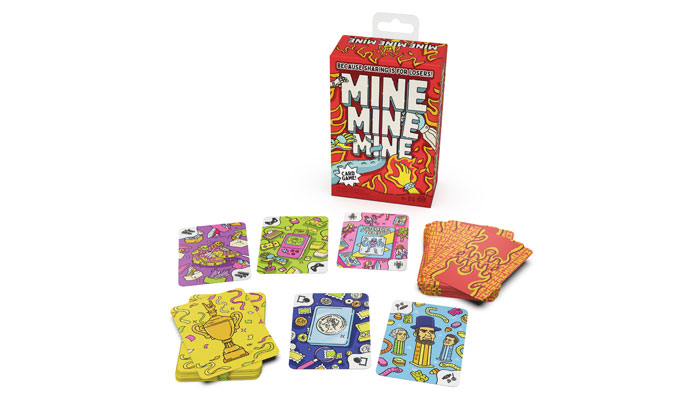
I’m sure they’d love that too! Now, let’s talk about one of your new launches – Mine Mine Mine! This is a new party game launching with Spin Master. For anyone that hasn’t played it yet, can you give us the pitch?
Mine Mine Mine is a game about trying to grab all the stuff that you want – one set of matching cards – while getting rid of stuff you don’t want! The only way you can communicate and swap cards with other players is by saying “Mine!” the same number of times as the number of cards I want to swap. So if I have a handful of cards and I want to get rid three of them, I’m going to say: “Mine, mine, mine!” If another player is also shouting “Mine, mine, mine”, then we can swap those three cards with each other. It’s super simple and really good fun.
Absolutely! And I’ll put this little video in here so folks can get a flavour of the game.
Where did the inspiration for Mine Mine Mine come from?
Do you remember Finding Nemo with the seagulls that say “Mine, mine, mine”.
Of course!
That was part of the inspiration. And then connecting the dots to kids going through that stage in life where everything is “Mine” and they’re not willing to share. Then it was about turning that into a game that has some familiar elements, and that everyone plays it once.
It looks like a winner. What made Spin a good home for it?
They have a great team, and Randy – who is there – has a very similar quirkiness to his thinking as me. And we’ve worked together before at Meyer/Glass and Hasbro, so I knew this was on his wavelength… Right down to the tagline: ‘Sharing is for losers’.
Ha!
The team has been great to work with. Mike Bisogno is a great inventor relations person and design lead over there. We’re launching other items too – like Beat the Parents: Let’s Roll and the Rubik’s Timer Cube – so it’s an exciting time.

Before we wrap up, what fuels your creativity?
I don’t know if I have a good answer to this!
Just watch a lot of Pixar movies?
Ha! Well, a lot of inspiration weirdly comes by just channelling it out of the universe! It might be something I’ve observed that starts a light bulb going off… Consumer insights are also super important…. There are so many elements that lead to a good starting point and by the time you get to ‘This is a great idea’, you might not remember how you got there. I just absorb as much as I can and then filter it into something that makes sense.
Great answer! Being a sponge – makes total sense. Last question, what’s the most underrated item you’ve worked on?
When I first became an inventor, I worked on a game called Silly 6 Pins that came out with Hasbro. It’s a bowling game where the pins talk to you and taunt you – I love that game.
I found the ad for it online! It looks fun!
I worked on it with a bunch of other people at Meyer/Glass, so I can’t take all the credit! But I do love that game.
Michael, a huge thanks for this – and congrats again on Mine Mine Mine. Let’s be sure to tie-in again soon.





